A Better Difficulty I: Trouble in Challenge City
By gamer_152 14 Comments

For many players, developing their skill at a game is infinitely more rewarding than a game just telling them they're skilful. It's why titles like Dark Souls, Cuphead, and even Crypt of the Necrodancer attained cult status: they were wellsprings of intrinsic reward. We can label all rewards, both inside and outside of video games, either intrinsic or extrinsic. Intrinsic reward has to do with our perception and expression of ourselves; it comes from within. Intrinsic rewards include feeling talented, intelligent, or creative. An extrinsic reward is something we obtain; it comes from the outside world. In a video game, that could mean levelling up, scoring points, seeing a cool animation, or learning that we're growing on a character we like. All games use intrinsic and extrinsic rewards, but the most popular high-difficulty titles are weighted towards intrinsic prizes.
These games are less about the transformation of the protagonist and more about the transformation of the person holding the controller. In these titles, tasks that once seemed impossible can, hours later, fall within our wheelhouse. Through mastering them, we can attain a confidence that stretches beyond any one game to many games, and maybe even other areas of our lives. We start asking, "If my personal limitations in this game turned out to be illusions, what other limitations I see in myself might be illusions too?".
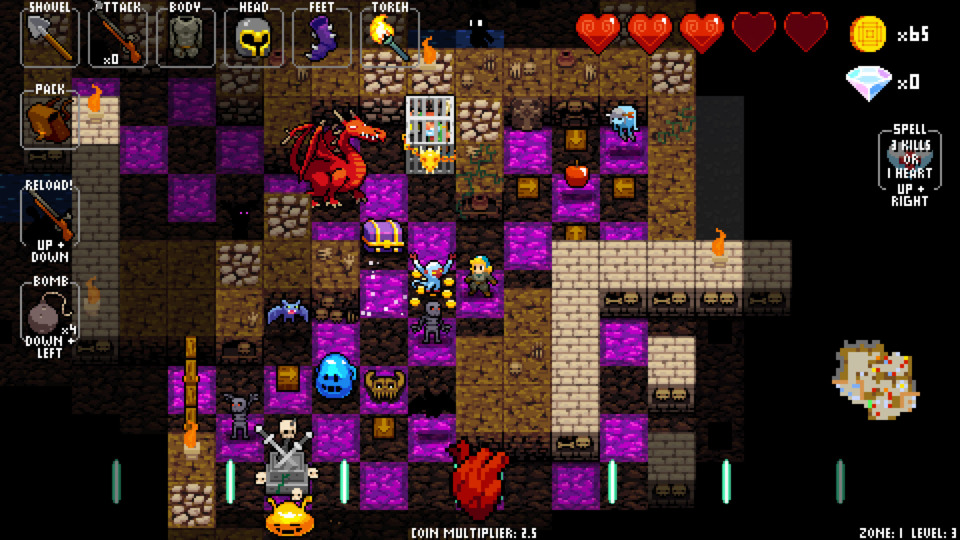
It's a special experience because it's not one you can get in media outside of games, and I think we can agree that it would be a plus for more people to feel that confidence. However, even a seasoned gamer can find many of these transformative titles impenetrable. We could say this inscrutability comes with the territory; it's just what happens when a game demands a dramatic improvement in our talents over time. For many people, a demanding game is a frustrating one, and different players have different tolerances for frustration. Still, that's not a complete answer for why this play format is offputting to some gamers any more than it's a complete answer for why it's appealing to others.
The sense of accomplishment that comes with substantially developing skills is something we find in many arenas outside of computer games. It's what education is all about. But formal and even many informal educational environments don't just present us with difficult tasks; they give us some guidance on performing those tasks. They also frequently provide a space in which to experiment with solutions and techniques, allowing us to find the best ones for the job. You don't just stumble into being a whiz at mathematics or baking; it takes some trial and an almost equal amount of error.
Experiment is risky by its nature. You don't know if your new methodology will help you reach your goal, and where applicable, you don't know whether you will be able to execute your technique satisfactorily. So, we tend to train in safe environments where failure doesn't come with a high cost. You won't find apprentices testing their mathematical ideas in constructing a nuclear reactor or learning the basics of baking in a Michelin star restaurant. And if we have a project on which failure could mean severe loss, we're likely to play it safe and stick to proven methods instead of risking untested ones. Understanding that dynamic is essential if we want to study how people play games. If a designer implements heavy penalties for player failure and a high risk of failure, the player is less likely to get creative and learn more about the game's systems.
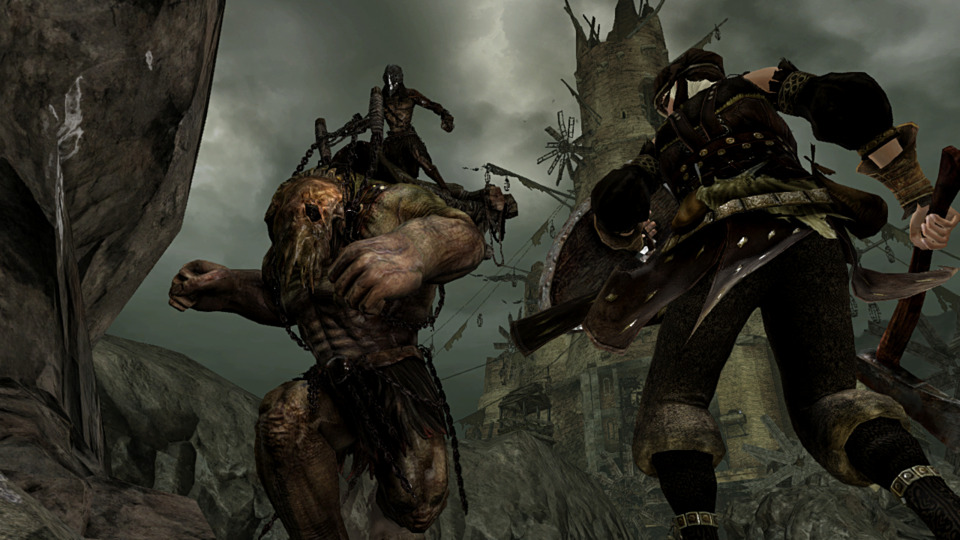
Now, Soulslike games use a workaround to stop players from taking the safe way out. They frequently introduce new enemies that will obliterate the player if they don't learn fresh approaches and techniques. It's evolve or die. But this brutal pressure on would-be warriors can backfire. Some players you can throw in at the deep end and watch surface triumphant, astounding themselves with feats of improvement far beyond their expectations. Other players, however, may just climb out of the water dejected and never return. If a user stops interacting with your game altogether, then you can guarantee they're never going to experience any of those intrinsic rewards you want them to.
Extreme difficulty games create large gaps between the player's current skill level and the skill level necessary to overcome the next significant challenge. But on average, people don't push themselves to their limits when they're zero sets to four or when the next car they have to overtake is a mile away. They give it their all when they're on the tiebreak set or when they need to make up just a few hundred meters to pass the car in front. This is why the majority of games make the next challenge just that bit more demanding than the previous rather than placing success on a far-off mountain.
There's a convincing case for meeting player failure with harsh punishment: when the user finally succeeds, they feel they have overcome enormous adversity. But there's also a compelling argument against severely punishing players: failure teaches us what approaches don't work, and therefore, is a part of working towards success. Given that, you could say that a game should not instil too much adversity to failure in a player. Rewarding losing would be counterproductive, but so may be making the state intolerable for participants.
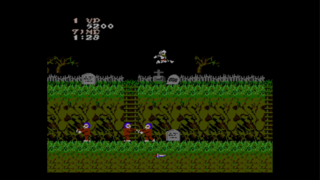
The nature of the punishment also matters. In education outside of video games, we can see that the most efficient way to learn a skill is by repeating patterns concurrently. You'll be painfully familiar with this fact if you've ever lived next door to someone learning an instrument. However, it's common for a game to respond to a fail state by setting the player back to a checkpoint long before the challenge they were working on, preventing sustained practice.
Soulslike games delight in pitting us against bosses that we'll likely need many sparring sessions to overcome. However, those same games often make it so that when we die, we can't immediately return to honing our skills against that boss. We have to run back through a good stretch of a zone to continue our practice, interrupting our learning. I'm not saying that adamantium tough games like Ruiner or Salt & Sanctuary shouldn't exist or even that developers should alter them. Still, I believe there's room in the medium for more accessible spaces in which to master skills. Let's return to discussing one of gaming's most misunderstood concepts: difficulty. We need to carve out a rough picture of what it means.
Some of our discussion of mastery so far has touched on the idea that designing difficulty is about finding the appropriate level of challenge to match a player's skill level. If the game is too hard, it may alienate the audience from testing themselves, but if it's too easy, they'll be unable to sharpen their teeth on the challenges. However, we must remember that the right difficulty is also one that acknowledges the player's level of openness to being challenged. The "Hard" difficulty setting on one game may be moderately challenging for one competitor and gruelling for another. However, if the former person only wants a moderate challenge and the latter person wants to be pressured to improve, it is the right difficulty setting for both of them. This is true despite the difficulty setting arguably being mismatched with the less skilled player.
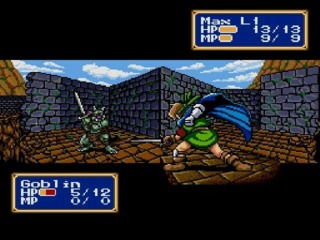
Here's another common myth: Difficulty is one metric. It's the big lever we set to somewhere between "Easy" and "Expert" when we start a new game. But think about everything that decides how hard a game is. It can include:
- The handling of the player avatar.
- The intelligence of the enemies.
- How labyrinthine the level design is.
- How many rules the player is expected to memorise.
- How many values they must keep track of at the same time.
- How explicitly hazards are indicated.
- How quickly the player has to react.
- And much, much more.
We can break each of these factors down into sub-factors. For example, handling could include how high a player avatar can jump and how quickly it can change direction. The intelligence of the enemies could consist of knowing how to position themselves relative to their target or knowing which weapons are suitable for each job. We can then divide some of these sub-factors into sub-sub-factors, and the sub-sub-factors into sub-sub-sub-factors, and so on.
Think about four different games. Say, Blaster Master, Shining Force, Sudoku Quest, and Phoenix Wright: Ace Attorney. It's not just that these titles have different "levels" of difficulty; it's that the way in which they are difficult differs. The difficulty of dodging enemies and timing our shots in Blaster Master is different from the difficulty of strategically placing, commanding, and outfitting our adventurers in Shining Force. The difficulty of Blaster Master and Shining Force are incomparable with Sudoku Quest's difficulty, which rests in processing certain configurations of numbers across space. All three of these difficulties sit apart from the difficulty of a Phoenix Wright trial in which we must seek out inconsistencies in our debate opponent's arguments.
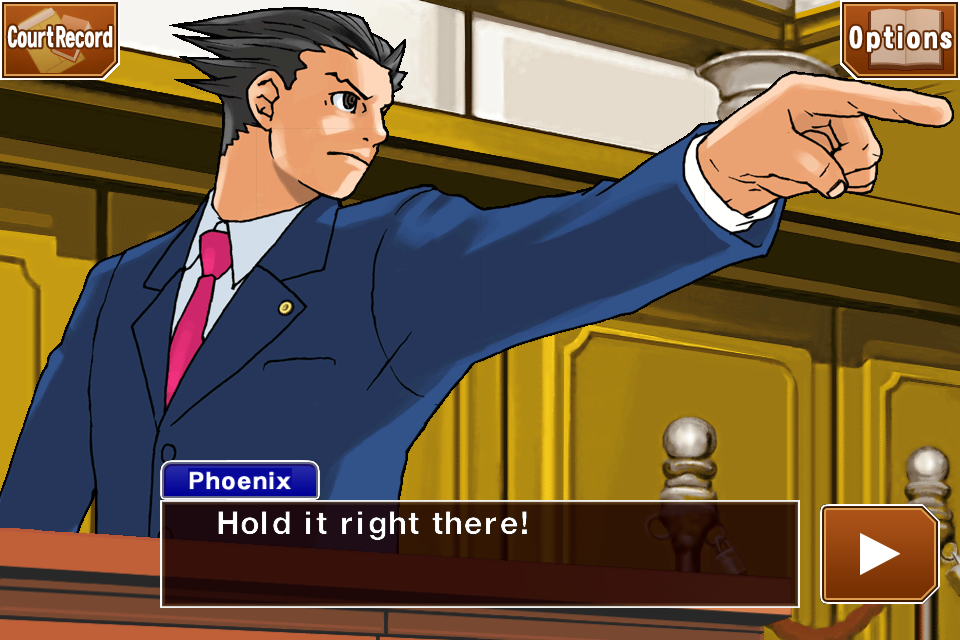
And, of course, every player that arrives to a game does so with a different skillset. Maybe a player is good at brute force logic but a bad shot. They could be comfortable with memorising testimony and evidence but unskilled when thinking about how they can play character abilities off of each other. There are many kinds of challenge, many levels of skill a player can possess at each of those challenges, and many different challenge types to have a low or high tolerance for. And those difficulties don't just exist between games but within them, as the same game will ask us to take on many different tasks. RPGs often tease out our management skills and combat strategy, action-adventure games often drag us into both hand-eye coordination exams and puzzles.
Therefore, matching the player's skills and taste to the game's difficulty is not simply a process of giving a casual player an easy game or a veteran player a hard game; the appropriate game is something more bespoke. Its difficulty levels match the respective skills of the player and their desire for challenge in each skill area. Finding the appropriate difficulty now seems less like finding the right notch for a lever to sit on and more like finding a lock that matches the player's key. Each pin must be at the right height to accommodate each of the key's teeth.
So, how do games handle the modular nature of difficulty? Well, in a lot of ways, they don't. Think about what the difficulty slider of the average action game does. It increases enemies' strategic aptitude and perhaps also their health and attack power. Maybe it changes how much ammo you can expect to pick up from your environment or the number and types of enemies you'll face. Compare these settings to everything that can make a game challenging. If it helps, use our bullet-pointed list from above. We can expect many of these elements of challenge to remain static, even as we adjust the waterline of the difficulty. "Difficulty" as a game option often covers only a limited region of "difficulty" as the player experiences it.

For example, the handling of the player model, the navigability of the environment, and the complexity of play are sizeable factors in deciding the skill you need to play a game. Yet, the difficulty setting modifies none of them. In aerial dogfighting sim Ace Combat, I can use the difficulty setting to toggle enemy pilots between rookie and expert. Still, it does nothing to make it more intuitive to pilot the plane, which for me, was an enormous hurdle to being able to play. In X-COM: Enemy Unknown, I can toggle the difficulty setting to decide how crafty the invading aliens are, but it doesn't reduce the mental load of learning all the systems I need to know.
This is why difficulty sliders are standard in shooter, racing, and strategy games but rare in platformers or environmental puzzlers. If "difficulty" only refers to the threat the AI pose and maybe a few player variables, then it will apply in a shooter, racing, or strategy game because those games all have complex adversarial AI. Platformers and environmental puzzle games typically don't. To make a platformer easier or harder, the player movement and level design would have to be modified. For an environmental puzzle game, the designer would have to forge new puzzles for each difficulty.
Outside of their limited scope, traditional difficulty settings have other shortcomings. Developers often make the player pick a difficulty setting that will last for the game's length without the player knowing what it's like to play at that level of challenge. The many different types of difficulty only make the long-term effects of each difficulty option more ambiguous. With the unpredictability of games, how can you tell what's going to happen ten or fifteen hours into the future?

And, of course, the player's skill level will increase as they progress through the game. Designers compensate for that by increasing the difficulty as they go. However, different players' skills are bound to grow at different rates. It's a fact accepted in formal education, but that gets discussed a lot less in mainstream gaming circles. My experience is that this is one more issue that disproportionately impacts those who have spent less time in the hobby. I know I quit a lot of games when I was younger because I was fine until about two-thirds in and then discovered that the challenge of the play had come out of sync with my skill.
Now, the good news is that the game design community is aware that explicit difficulty options have their limits and have long been providing players ways to choose their challenge outside of explicit difficulty decisions. When I talk about explicit difficulty decisions, I mean formally telling the game how we want to play. For instance, selecting "Hard" at the outset of a campaign or clicking a checkbox to turn on permadeath. We usually make these choices in a menu outside of live play. There are also implicit ways to select difficulty: decisions about how we want to play that we don't express to the game in clear formal terms. They vary by game, but here are some of them:
- Deciding the route we take through a level.
- Deciding whether to fulfil an optional mission objective.
- Deciding whether to try and obtain a collectable.
- Deciding what character we play.
- Deciding what gear we use.
- Deciding whether we kill, hack, or stealth our way through a room in an immersive sim.
- Deciding whether to try and attain a higher score or rank on a level.
- Deciding to place arbitrary constraints on ourselves that aren't enforced by the game, such as in a speedrun or pacifist run.

These implicit decisions are typically expressed through live play and don't involve clicking a menu option. Instead, we signal these choices through behaviour and through settings that indirectly reference difficulty. Additionally, while explicit difficulty options usually affect entire playthroughs or sessions, implicit decisions typically allow us to set the degree of challenge on the fly. I could be playing Ghostrunner and have been going out of my way to collect the hidden artefacts up to a certain level but then get in over my head. In which case, I could implicitly lower the difficulty by ignoring the collectables and focusing solely on completing the main goals. Or say, I work my way through the first few missions of Sniper Elite 3, avoiding the optional objectives, but after a warmup, I feel confident and want to jack up the difficulty. I can do that by completing the optional objectives for the coming levels.
Implicit difficulty decisions also let you alter the resistance you receive from the game with respect to different kinds of challenges. Imagine you are playing Prey (2017), and you have impressive hand-eye coordination but poor spatial awareness. You may choose to shoot your way through a room rather than sneaking through it. A person with the inverse skillset may make the opposite choice. When playing Apex Legends, a player who feels they're poor at deceiving opponents could challenge themselves by controlling the hologram-slinging soldier Mirage. If they want to test their ability at managing their team's health, they'd be better off picking Lifeline, the medic.
I've heard some designers say that the advantages of implicit difficulty choices mean that they should replace explicit difficulty choices. However, the two often serve different functions, and so, are not interchangeable. Deciding to go for 100% completion in a game makes it hard in a way that turning up AI health doesn't. The challenge of completing additional, tougher platforming sections is not the same as the challenge of permadeath. In some cases, these implicit choices can change the tenor of a section of the game but cannot change the overall hardness. E.g. A certain power-up in a top-down shooter like TwinBee might bring its challenges in line with your skills, but you won't be able to keep it with you for the whole game. Perhaps not even for the majority of it. Or suppose you're playing a roguelike, like The Binding of Isaac. The compulsory rooms could be too easy for you, but optional rooms pitch the difficulty just right. If that's true, then about 50% of the game still fails to develop your talents.

Implicit difficulty decisions as we know them cannot fill the holes left open by typical explicit difficulty decisions. They would not solve my Ace Combat problem and would at least struggle to remedy my X-COM troubles. Especially when the basic operation of a game is a challenge, implicit difficulty decisions are of limited use. And even in solving issues like differences in navigational aptitude or reaction time between players, they can only go so far before creating wild variations between the difficulty of mainline challenges and optional objectives.
It's also pertinent to mention that some game formats provide many different ways to tackle challenges and choices about which challenges to tackle, and other designs are more prescriptive and linear. It's possible to identify how implicit difficulty choices could play a pivotal role in Devil May Cry or Monster Hunter, but harder to see how you'd fit as many implicit difficulty options into a Road Rash or a Skullgirls.
Now, you might ask why I'm framing difficulty as a choice at all. Some games dynamically alter the degree of challenge by reading how the player has performed previously and setting their upcoming challenges accordingly. And hey, software engineers are doing a lot with neural nets these days. Maybe in the future, an AI will be able to read all elements of our skill and tune challenges to be a perfect match for our skill. Today, that luxury does not exist. Dynamic difficulty systems can make adjustments that nudge games further in line with our desired level of pushback. However, like option-based difficulty systems, today's automated difficulty systems don't operate on many of the aspects of a game that determine the difficulty.

Dynamic difficulty systems present another few problems in their own right. Firstly, they make it so that the only way the player can lower the difficulty is to fail repeatedly. The user may feel as though they are banging their head against a wall, repeatedly losing, while the game slowly eases itself to the correct accessibility. This is why horror games such as Resident Evil 4 and Amnesia: The Dark Descent contain some of the most lauded implementations of dynamic difficulty. In such games, the player expects to frequently come face to face with the monsters and be struck down: that's part of the appeal. The same attitude does not apply to a conventional empowerment game like inFAMOUS or Outriders.
Secondly, this relationship between failing and the reduction of the difficulty may also incentivise failure too heavily. I might argue that the player should receive an encouraging reward when they fall down so that they're motivated to get back up and overcome the challenge. However, with dynamic difficulty, they can perform laxly and overcome the current section of the game without improving their skills at all.
Thirdly, dynamic difficulty settings assume what the player wants to happen when they lose. For fiendishly hard games like Downwell or Getting Over with Bennett Foddy, it would be violating their spirit to lower the difficulty whenever we fail. We don't play these games to have them ease their challenge to meet our skill level. We play them to raise our skill level to meet their challenge. Being able to fail the same task, at the same difficulty, many times in a row, is a crucial step in the learning process.
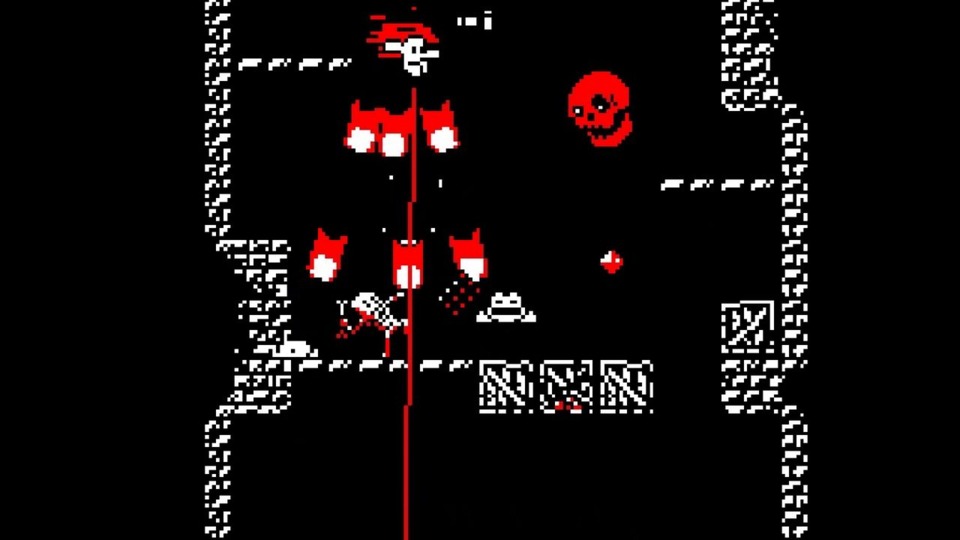
Let's review: The experience of growing to meet monumental skill challenges is special and unique to games as a medium. However, most players grow not by facing up to the masocore trials that are most famous for honing skills but by chasing goals slightly out of their reach. The ideal environment for self-improvement is usually one that lets the player practice a task without interruption and enables them to experiment with solutions without incurring debilitating punishments.
Within this environment, any attempt to match difficulty to player skill must recognise that talent is not a singular metric but consists of a series of different competence levels, each matching a different kind of challenge a game can present. Furthermore, each player has different tolerances for different kinds of challenge. Explicit difficulty settings in games rarely take these realities into account, providing limited options which only alter some aspects of difficulty.
Dynamic and implicit difficulty options are not replacements for explicit difficulty settings but can better fit the difficulty of a game to a player. In the case of implicit difficulty options, their generally modular approach to difficulty partially acknowledges the multi-faceted nature of skill. However, these approaches are only suitable for certain species of game, and to some degree, suffer from the same issues as explicit difficulty options. So, what might a game that fully accounts for modular difficulty look like? We'll explore that next time. Thanks for reading.